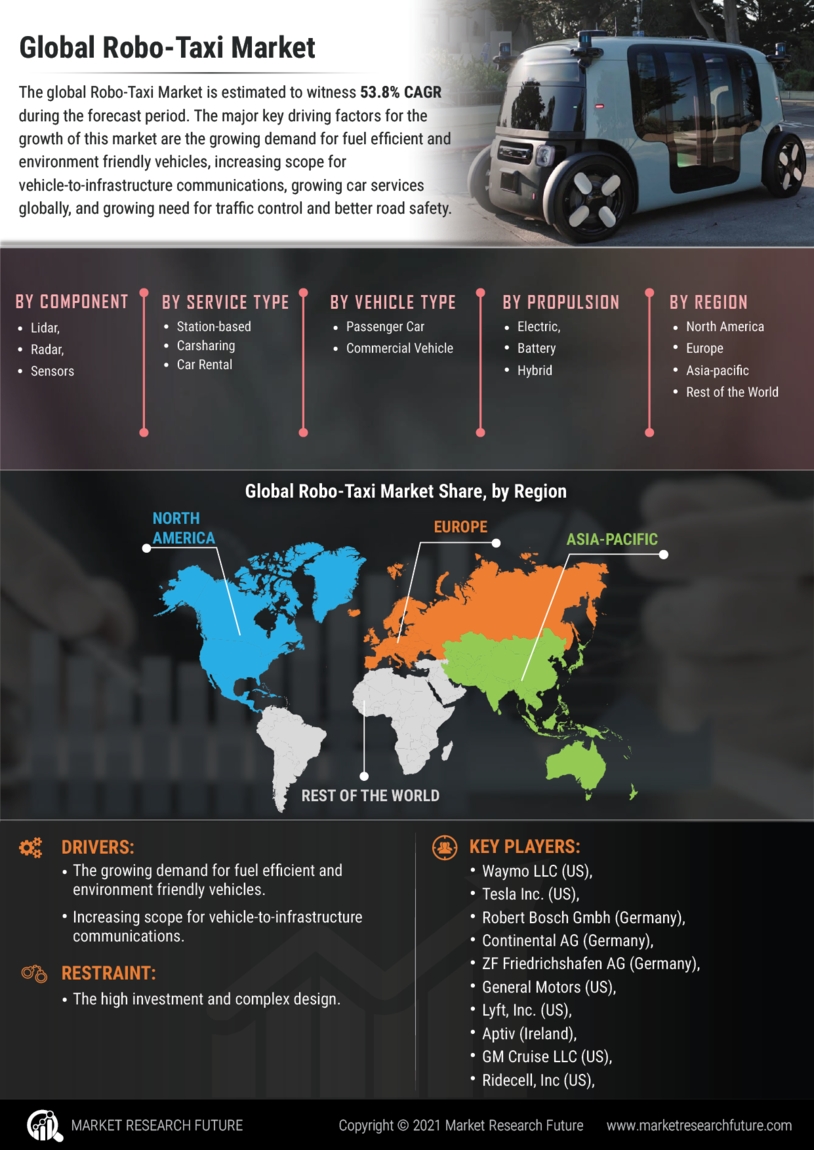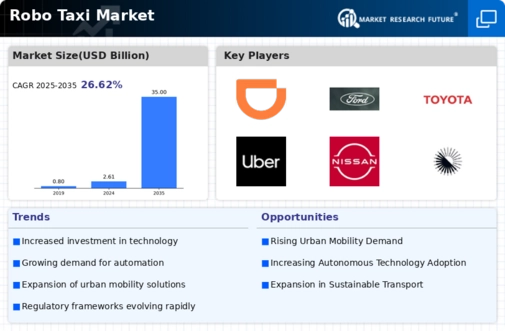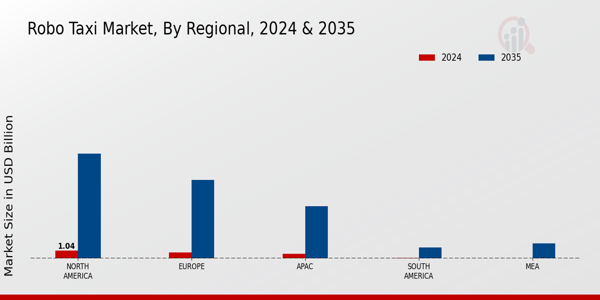Consumer Acceptance
Consumer acceptance is a pivotal factor influencing the Global Robo Taxi Market Industry. As public awareness of autonomous vehicles increases, so does the willingness to embrace this new mode of transportation. Surveys indicate that a growing number of individuals are open to using robo taxis, particularly in urban settings where convenience and cost-effectiveness are paramount. This shift in consumer sentiment is likely to drive market growth, with the industry projected to reach 2.61 USD Billion in 2024. As more people experience the benefits of robo taxis, their acceptance may further accelerate, fostering a more robust market environment.
Urbanization Trends
Urbanization is a significant driver of the Global Robo Taxi Market Industry, as more people migrate to cities, leading to increased demand for efficient transportation solutions. By 2035, it is anticipated that the market could expand to 35 USD Billion, largely due to the need for sustainable urban mobility. Cities are grappling with congestion and pollution, prompting governments to explore innovative solutions like robo taxis. These autonomous vehicles offer a potential remedy by reducing the number of cars on the road and optimizing traffic flow. Consequently, urbanization not only fuels demand but also shapes the regulatory landscape for robo taxi operations.
Environmental Concerns
Growing environmental concerns are influencing the Global Robo Taxi Market Industry, as cities seek to reduce their carbon footprints. Robo taxis, often powered by electric vehicles, present a viable alternative to traditional gasoline-powered taxis. This shift aligns with global sustainability goals, as urban areas aim to decrease greenhouse gas emissions. The increasing emphasis on eco-friendly transportation options is likely to propel the market forward, with projections indicating a compound annual growth rate of 26.62% from 2025 to 2035. As environmental regulations tighten, the adoption of robo taxis may become a strategic priority for urban planners and policymakers.
Government Initiatives
Government initiatives play a crucial role in shaping the Global Robo Taxi Market Industry. Many countries are investing in infrastructure and regulatory frameworks to support the deployment of autonomous vehicles. For example, several cities are piloting robo taxi services to assess their feasibility and impact on urban transportation. These initiatives not only provide financial backing but also create a conducive environment for innovation. As regulatory barriers diminish, the market is expected to flourish, potentially reaching 35 USD Billion by 2035. This proactive approach by governments indicates a recognition of the transformative potential of robo taxis in modern transportation.
Market Growth Projections
Technological Advancements
The Global Robo Taxi Market Industry is experiencing rapid technological advancements, particularly in artificial intelligence and machine learning. These innovations enhance the capabilities of autonomous vehicles, enabling them to navigate complex urban environments safely. For instance, companies are integrating advanced sensor technologies and real-time data processing to improve decision-making in real-time. As a result, the market is projected to reach 2.61 USD Billion in 2024, reflecting the increasing demand for efficient and reliable transportation solutions. This trend suggests that as technology continues to evolve, the adoption of robo taxis will likely accelerate, further driving market growth.

























